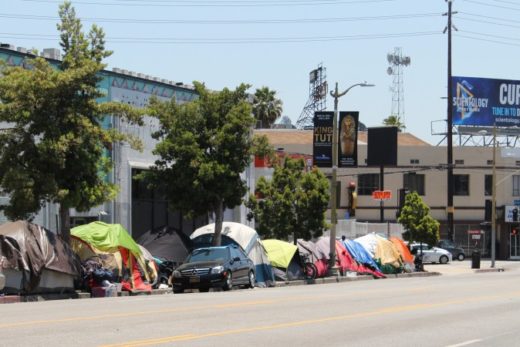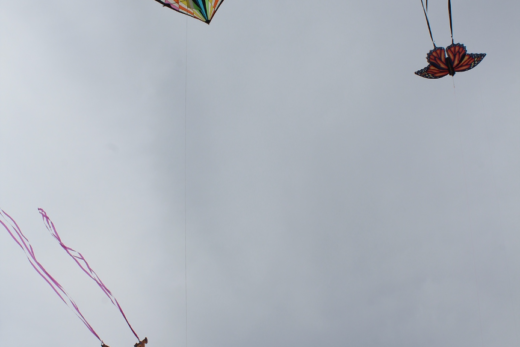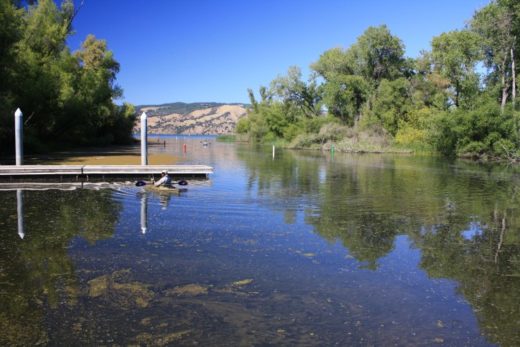The vibrant and colorful wildflowers that blanket California’s hills and valleys this time of year are a magnificent sight to behold. But not every year is a “superbloom” year. Superblooms create an explosion of blossoms, producing a breathtaking display of nature’s beauty that can transform the normally tan and brown hills into scenes reminiscent of impressionist landscape paintings.


So what does it take to produce a superbloom?
Several factors must align, and in the right order, for a superbloom to occur. The first and most important is rainfall. California’s wildflowers require significant amounts of rain to germinate and grow. And this year we have had plenty. Specifically, they need a steady rain in the fall and winter months, followed by consistent warm temperatures and sunny days in the spring.
It is that last part of the equation that is the trickiest. If it warms up too quick the delicate flowers can dry out too fast. If the nights are too cold frost can either damage the plants or delay their flowering.


With these factors in mind, it’s no surprise that the Carrizo Plain National Monument is one of the best places in California to witness a superbloom. Located in the southwestern part of the state a bit southwest of Bakersfield, the Carrizo Plain is a vast expanse of grassland and rolling hills that is home to a variety of wildflowers.
In the past couple of decades, the Carrizo Plain has experienced several superblooms, drawing swarms of visitors from across the state and beyond. The last bona fide superbloom was in 2019. In most years this explosion of color occurs in early to mid April. Some of the most common wildflowers that can be seen during a superbloom include:
California Poppy (Eschscholzia californica): The California poppy is the state flower of California, and it’s easy to see why. The flower’s vibrant orange color is a sight to behold, and it can grow up to 12 inches in height. The petals of the flower are delicate and may appear slightly crinkled, giving it a unique texture.
Lupine (Lupinus sp.): Lupine is a genus of flowering plants that includes several different species. In the Carrizo Plain, you may see several different types of lupine, including the Arroyo Lupine (Lupinus succulentus) and the Miniature Lupine (Lupinus bicolor). Lupine flowers can be blue, purple, pink, or white, and they typically grow on tall stalks that can reach up to three feet in height.
Goldfields (Lasthenia sp.): The goldfields is another genus of flowering plants that is known to bloom in the Carrizo Plain. The flowers are small and daisy-like, with yellow petals and a dark center. They can grow in large clusters, creating a sea of yellow that is truly stunning.
Blue Dicks (Dichelostemma capitatum): Blue dicks is a perennial plant that is native to California. It produces showy clusters of star-shaped flowers that can range in color from pale lavender to deep blue-purple. The plants are typically less than two feet in height, with narrow, grass-like leaves.
Owl’s Clover (Castilleja exserta): Owl’s clover is a unique flowering plant that is known for its distinctive shape. The flowers are hooded and tubular, with a bright pink or purple color. The plants can grow up to two feet in height, and they are often found growing in dense clusters.
Fiddleneck (Amsinckia sp.): Fiddleneck is a genus of plants that includes several different species. The flowers are small and tubular, with a yellow or orange color. They typically grow on tall stalks that can reach up to three feet in height.

But the Carrizo Plain isn’t the only area in California that offers an impressive display of wildflowers in the spring. Other notable locations include Antelope Valley, Anza-Borrego Desert State Park, and Point Reyes National Seashore.
In 2019, one California location experienced an exceptionally rare super bloom –which is when an unusually large number of wildflowers bloom at the same time. This event drew a massive number of tourists and flower enthusiasts to Walker Canyon near Lake Elsinore, CA, causing what only could be described as a circus-like atmosphere.
The crowds were so large that authorities had to shut down access to the canyon on several occasions, causing major traffic jams on the nearby freeways. People were parking their cars illegally along the roads, trampling over the wildflowers, and even causing damage to the environment that may take years or decades to fully repair.
In addition to the crowds, there were also vendors selling food, souvenirs, and other items, which added to the carnival-like atmosphere. Some visitors were even spotted posing for photos in the middle of the flowers, which contributed to the destruction of the delicate ecosystem.
Overall, the sheer number of people and the chaos that ensued caused concern among conservationists and local officials who were worried about the long-term impact on the environment.
As of this writing, the City of Lake Elsinore, Riverside County Parks, and the Western Riverside County Regional Conservation Authority (RCA) have listed Walker Canyon as closed to the public.



If you do venture out to the Carrizo Plain please know that the monument has many unimproved roads that can quickly become impassible in wet weather. This is a remote area with no services and spotty cell-phone reception at best. A breakdown in the more remote portions of the monument could mean a long wait for help. Bring water and supplies.
Also, be sure to tread lightly and respect the delicate ecosystem that makes this fantastic, yet temporary, beauty possible. Stay on the roads, do not park on the flower beds and take only pictures while leaving only footprints.
Remember, these wildflowers are not just a pretty sight, but an important part of the Golden State’s natural heritage.









